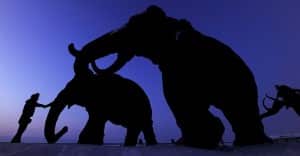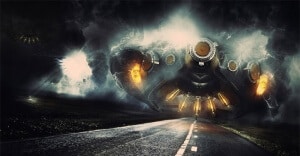After a massive celestial body hit the newborn Earth about 100 million years ago, the spewed debris furtherly coagulate and eventually formed a new and enhanced Earth, along with its natural satellite – the Moon.
Previous studies claimed that at some point in time, the newly developing Earth was hit by a Mars-sized cosmic rock dubbed Theia, a name originating from the mother of the moon in Greek legends. The rubble resulted from the impact then formed the moon. However, until recently, scientists couldn’t determine whether the impact was a brief slam or a high-energy hit.
Now scientists have a clearer idea about what happened in those forgotten times. According to the lead author of the study Edward Young, who is a cosmochemist and geochemist at the University of California, Los Angeles, the rocks that disbanded from Earth after the great impact and later formed the moon were a mixture of the two celestial bodies, thus suggesting that the collision that formed the moon was a high-energy impact.
With the possibility of a softer blow being ruled out, researchers are now trying to determine how much of Earth’s composition is also found encrusted into its natural satellite. In order to do that, they have been analyzing moon rock samples gathered during the Apollo 12, 15 and 17 lunar missions, along with a rare lunar meteorite that was knocked off the moon and later crashed on our planet.
As we continue to improve our ability to make measurements, the moon and Earth continue to be more and more alike isotopically, Young said in an article for Space.com. It should be remembered that the new level of precision that we are working with is challenging, and so it is not surprising that there will be some disagreement in the beginning.
Isotope geochemist Andreas Pack at the University of Gottingen in Germany, whose group previously forwarded a detailed report on this particular topic, said this new study offers “high-quality data along with a sound explanation for the surprising similarity of Earth and the moon. There is nothing for me to criticize.”
With the American and German scientists working together, more details about our planet’s early existence are slowly being uncovered. After they ran a series of tests on lunar samples, researchers concluded that the newborn Earth and Theia contained ample amounts of water bearing oxygen-17, water that may have come in the form of ice or water-laden minerals. Now that they’ve mutually agreed on moon’s composition (which is a mix between the two colliding celestial bodies,) they are trying to find other groundbreaking details.
In the future, we will be measuring many more lunar samples to get a feel for what sort of variability there might be from terrain to terrain on the moon, Young said. For example, we see evidence for oxygen isotope differences between basalts on the moon and the highlands of the moon. These differences mimic similar variability seen here on Earth.
A detailed analysis of the discovery is found in the Jan. 29 issue of the journal of Science.
[youtube id=”vRf-hB8X7b0″ align=”center” mode=”normal” autoplay=”no” thumbnail=”theia hit earth” grow=”no”]










Trackbacks/Pingbacks